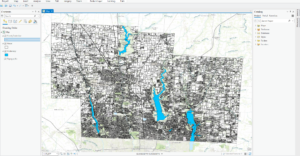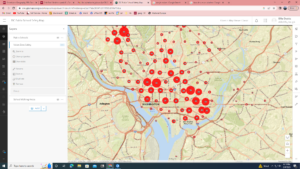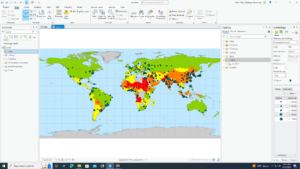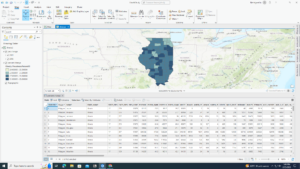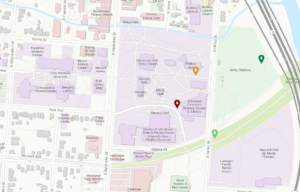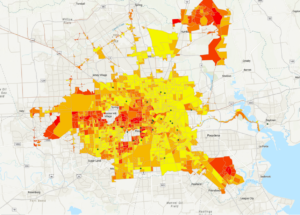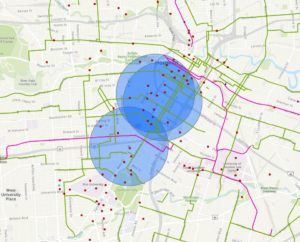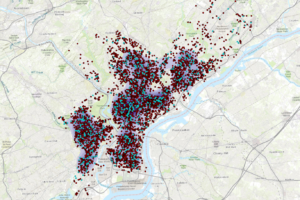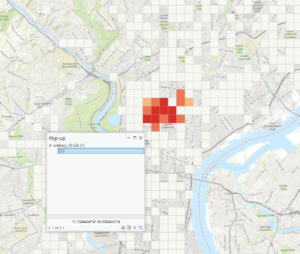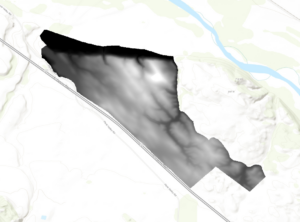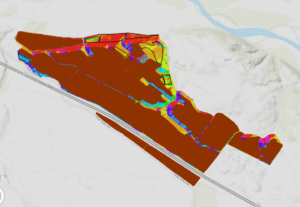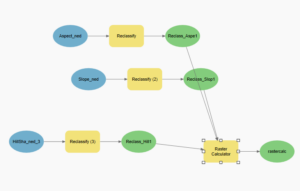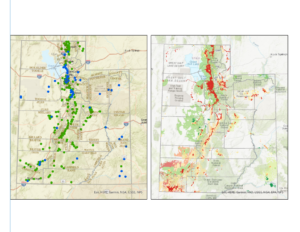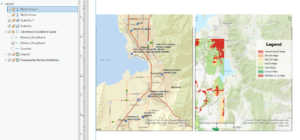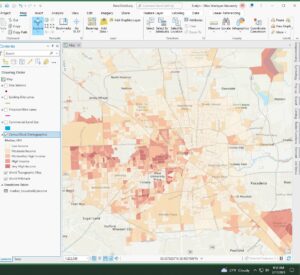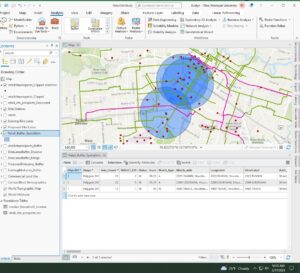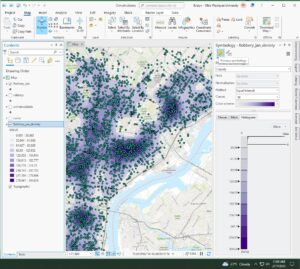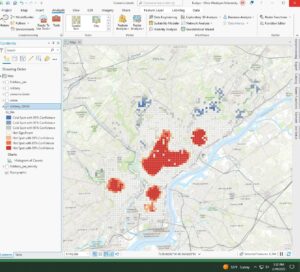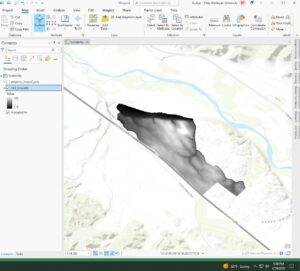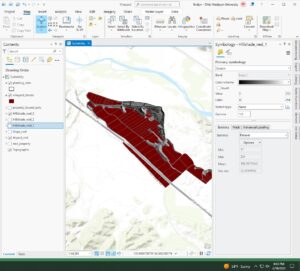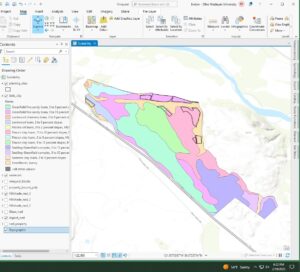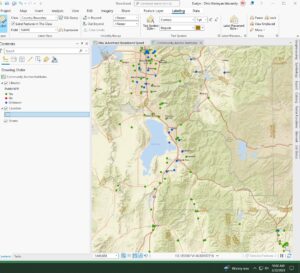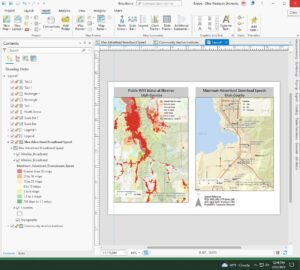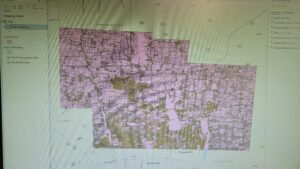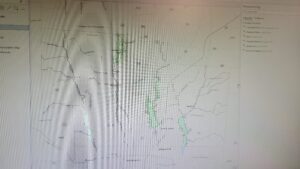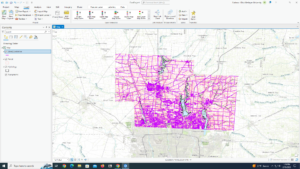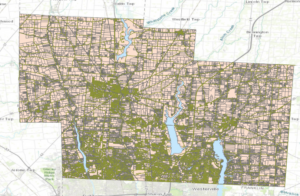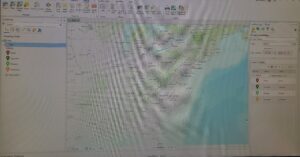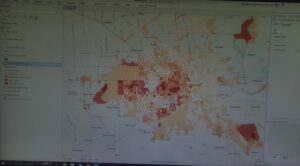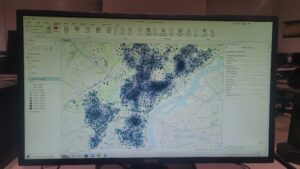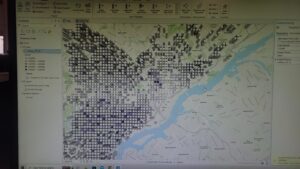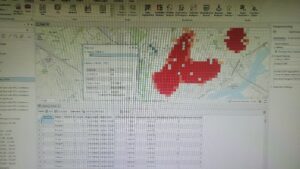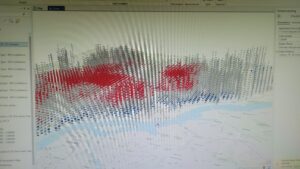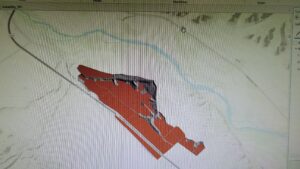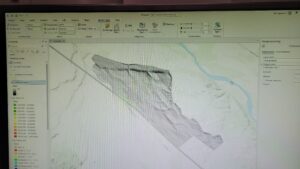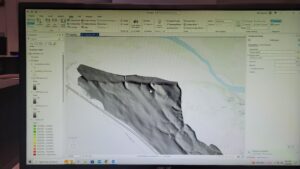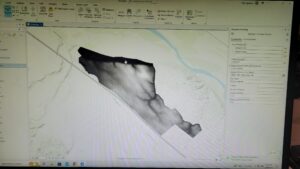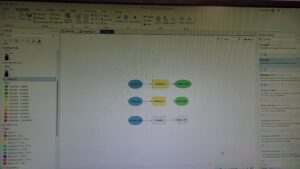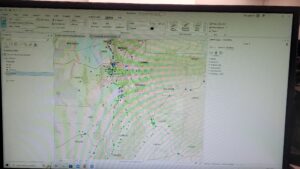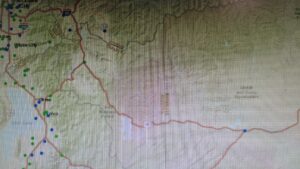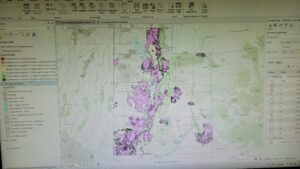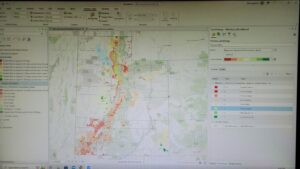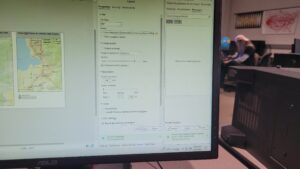Zip Code: Contains all zip codes in Delaware County. Created in 2005 by dissolving all parcels in the county by property address with tax exempt parcels and dedicated roads with no zip codes being manually populated. Published monthly.
Recorded Document: Contains points that represent recorded documents in the Delaware County Recorder’s Plat Books, Cabinet, Slides and Instrument Records not represented by subdivision plats that are active. Documents such as vacations, subdivisions, centerline surveys, surveys, annexations and miscellaneous documents. Updated on a weekly basis and published monthly.
School District: Contains all school districts within the county. Created via the Delaware County Auditor’s parcel records of the districts. Updated on an as-needed basis and published monthly.
Map Sheet: Contains all of the map sheets of Delaware County. A map sheet is a single map or chart in a map series, such as a USGS 7.5-minute topographic map, or printed map.
Farm Lot: Consists of all the farm lots in both US Military and the Virginia Military Survey Districts of Delaware County. Data is maintained on an as-needed basis where new surveys are recorded.
Township: Consists of 19 different townships that make up Delaware County. Dataset is updated on an as-needed basis and published monthly.
Street Centerline: Contains a spatially accurate topologically correct representation of the road system in Delaware County. Depicts center of pavement with public and private roads with address range data developed from data collected by field observation of existing address locations and manual addition from building permit information. Supports appraisal mapping, 911 emergency response, accident reporting, geocoding, disaster management and roadway inventory given to ODOT Roadway Inventory Standards. Updated on a daily basis for all fields but 3D, and published monthly.
Annexation: Contains Delaware County annexations and conforming boundaries from 1853 to present day. Updated on an as-needed basis and published monthly.
Condo: Consists of all condominiums within Delaware County.
Subdivision: Consists of all subdivisions (which there’s a lot of) within Delaware County. Updated on a daily basis and published monthly.
Survey: Shapefile of land surveys in Delaware County using point coverage. Old surveys have been scanned from the map department and added in. All surveys after May 2004 were and are being scanned by the map department. Updated on a daily basis and published monthly.
Dedicated ROW: Consists of all lines that are designated Right of Way within Delaware County. Updated on an as-needed basis and published monthly.
Tax District: Consists of all tax districts in Delaware County and defined by the Delaware County Auditor’s Real Estate Office and dissolved on the Tax District code. Updated on an as-needed basis and published monthly.
GPS: Consists of all GPS monuments established between 1991 and 1997. Updated on an as-needed basis and published monthly.
Original Township: Similar to the township layer, but only using the original townships from Delaware County. Updated on an as-needed basis and published monthly.
Hydrology: Contains all major waterways in Delaware County, enhanced by LIDAR data in 2018. Updated on an as-needed basis and published monthly.
Precinct: Consists of all voting precincts in Delaware County. Maintained by the Delaware County Auditor’s GIS Office with the direction of Delaware County Board of Elections. Updated on an as needed basis and is published as needed by the Delaware County Board of Elections.
Parcel: Consists of polygons that represent parcel lines of Delaware County, maintained by the Delaware County Auditor’s GIS Office. Represented by recorded documents in the Delaware County Recorder’s Office. Maintained on a daily basis and published monthly.
PLSS: Consists of all Public Land Survey System polygons in both the US Military and Virginia Military Survey Districts of Delaware County. Maintained on an as-needed basis where new surveys have been recorded, updated on an as-needed basis and published monthly.
Address Point: State of Ohio Location Based Response System Address Points dataset is spatially accurate representation of all addresses in Delaware County. Maintained by Delaware County Auditor’s GIS Office. Intended to support appraisal mapping, 911 emergency response, accident reporting, geocoding and disaster management. Updated on a daily basis and published monthly.
Building Outline: Consists of building outlines for all structures in Delaware County. Created in 2008 from Orthophotos. Updated on an as-needed basis and is published monthly.
Delaware County Contours: Consists of two-foot contours to show topographical and elevational changes in Delaware County.
